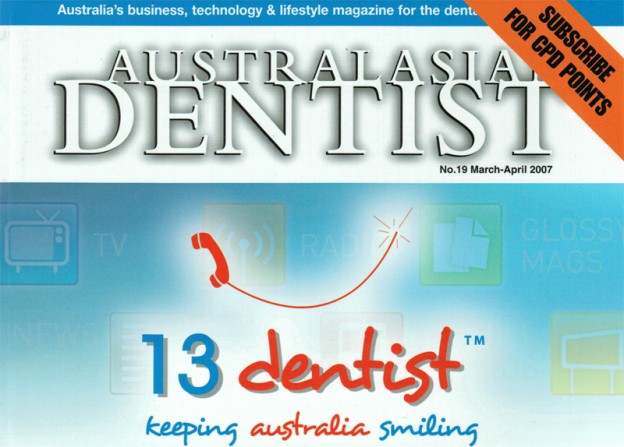The incorrect use of the Yellow Pages is still the single biggest mistake I witness on a regular basis. But instead of taking my word on this topic, I would like you to simple do the math.
Your total expenditure on Yellow Pages, divided by the number of patients created will give you your Cost of Acquisition (COA). This of course applies to every marketing activity and once you have this statistic, you have a very clear idea of where you should be increasing your marketing activities and where you should be decreasing them. It is worth considering taking this one-step further and monitoring the gross revenue from each activity per patient as this will tell you not just how many patients your marketing is creating but the quality of the patients attracted from each activity.
I would like to present a real life example of an ineffective Yellow Pages campaign. The client spent exactly $65,000 on their Yellow Pages advertising, which consisted of a full-page advertisement and a number of smaller adverts in the locality guide as well as bold listing. The cost was heavily discounted due to a major stuff up by Yellow Pages the previous year, so the client thought it was a bargain. The practice has an amazing practice manager who can produce accurate figures on any aspect of the practice. This is what was achieved from their Yellow Pages campaign in the last 12 months.
Total expenditure *************** $65,000
Number of new patients ************* 532
Cost of Acquisition ******* $122 per patient
Total gross revenue from these 532 patients over the 12-month period was $81,000. That is just $152 per patient, take away the cost of the initial advertising then this figure drops to just $30 per patient. Now remember these figures are real and they included all the work created from these patients in the course of the last twelve months not just the initial meeting.
Now, it’s very easy to criticise this practice’s approach, a number of other thoughts might spring to mind about their fees, their internal systems, some of which may be valid. However, look at these figures and it is easy to assess the situation. Without these figures or with only a partial view of these figures, then it’s understandable that practices make the same mistake year after year.
Although I have used an example where the expenditure is high, the same principle applies to any display ad in the Yellow Pages and indeed all your marketing. These figures are easy to extract from your business and highly addictive. Once you start seeing how much each activity is generating, you will soon find your enthusiasm grow for certain activities and wane on others.
Referrals are the life blood of every practice and it’s worth applying the same rules to this activity. If you implement a system whereby every patient is given a couple of practice brochures as they leave to pass on to their family and friends and this translates to a measurable increase in the number of referrals received, it’s easy to get the whole team highly motivated about continuing this process when you can show that the CoA is a few cents, which covers the printing of the brochure and gross value of the patient is many times higher than that created from other activities.
Word of mouth accounts for the majority of new patients acquired – whatever Yellow Pages may assert. As patients may find your number in Yellow Pages, after a recommendation, then surely the size of ad is irrelevant. Yellow Pages has its place in society, if I need a plumber in a hurry that is where I would start. However, as a discerning consumer I am not going to choose my dentist from a Yellow Pages advertisement. If your practice is geared for emergency work then the relevance of Yellow Pages increases, but if not, a bold listing or a small display ad in the locality guide is all you need to maximise this marketing medium.
Yellow Pages online is a growing medium and still relatively good value. I think the swag of other product they try to sell dental practices – but hardly promote to consumers – are a total waste of time and money.
My bottom line is that if you have a need to find more patients and you have a budget for Yellow Pages, then there are numerous other marketing activities that will achieve better results at lower costs. You should carefully consider before writing that cheque again this year.
Carl Burroughs and his team at IDM can be contacted on 02 9211 1477 or email info@idm.com.au.
* Sensis My Wellbeing – Health and Beauty Dentists 2007.

